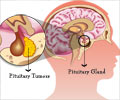Pegvisomant Medication Information
Learn everything you need to know about Pegvisomant-pronunciation, uses, dosage guidelines, indications, and when to take or avoid it.
Get up-to-date information on side effects, precautions, warnings, and proper storage to ensure safe usage.
Explore Pegvisomant brand names commonly used in India and internationally, along with detailed pricing information. Consult your healthcare provider for tailored medical advice.
Generic Name : Pegvisomant Pronunciation : peg-VI-soe-mant Therapeutic Classification : Growth hormone receptor antagonistBrand Names or Trade Names of Pegvisomant
International :
Somavert
Why is Pegvisomant Prescribed? (Indications)
This medication is a growth hormone receptor antagonist, prescribed for acromegaly in people who have not responded to other therapies. It works by blocking the effects of growth hormone.When should Pegvisomant not be taken? (Contraindications)
Hypersensitivity.What is the dosage of Pegvisomant?
Adult- SC- The recommended loading dosage is 40mg. Maintenance: 30mg.How should Pegvisomant be taken?
It comes as a solution for injection to be administered by a healthcare provider under the skin.What are the warnings and precautions for Pegvisomant?
• Caution should be exercised in patients with history of sugar, tumor, liver problems, alcoholism, any allergy, who are taking other medications, children, during pregnancy and breastfeeding.• It may cause dizziness, do not drive a car or operate machinery while taking this medication.
• It may affect blood sugar level; monitor sugar level regularly.
• Monitor growth hormone blood levels, insulin-like growth factor ( a gene plays an important role in childhood growth) blood levels, and liver function regularly while taking this medication.
What are the side effects of Pegvisomant?
Body as a whole - Infection, pain, accidental injury, back pain, flu syndrome and chest pain.Gastrointestinal - Abnormal liver function, diarrhea and nausea.
Central Nervous System - Dizziness and tingling.
Metabolic - Swelling in the extremities.
Heart - High blood pressure.
Respiratory - Sinus inflammation.







